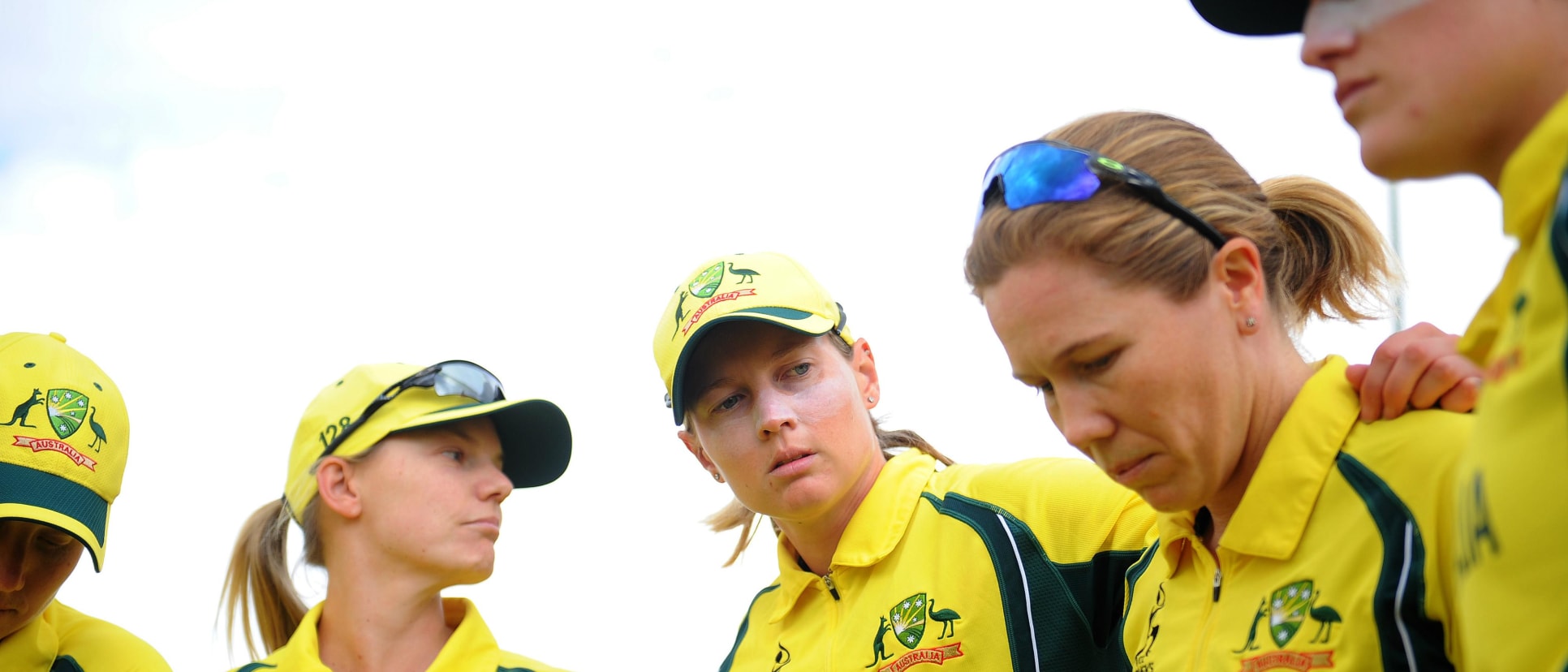The chink in Australia's armour

Six-time champion Australia came to ICC Women’s World Cup 2017 with a single-minded determination for world domination. It spoke of plans and processes and options. Execute. Be positive. Nullify threats. Back yourself.
No total was high enough, no chase too steep. It had lost just once in the group stage, by a narrow three runs.
It’s a long tournament – manage personnel. Manage rest. Manage fitness.
A captain with a busted shoulder? Manage her workload. Bring along a replacement captain in a like-for-like swap when needed.
It had even practised for situations exactly like Thursday’s, when it had to tweak a proven formula to fit a curtailed 40-over game (the semi-final was eventually a 42-overs-a-side affair). The Aussies knew what they had to do, but Harmanpreet Kaur played an innings of a lifetime. Few teams could have made a chase of that and it was a testament to Australia’s class that it made 282 in 42 overs seem probable.
But Harmanpreet, like some others in the tournament, exposed Australia’s inflexibility. And that is the story of the missing third seamer.
“I thought we were pretty well prepared physically and mentally to do well,” insisted Matthew Mott, the coach, after the 36-run loss that knocked them out of the tournament. “You can always pick holes in different teams, but leading into this game, we lost one game by three runs. I think we pretty much had done everything we wanted to do; we ticked every box.
“I didn’t think we were vulnerable till today, to be honest. I thought we were going to be peaking at exactly the right time.”
To be fair to Australia, it had got several things right. The opening pair, the spinners, the middle order. On most days, just one of those clicking would have won it the match. But against Harmanpreet in “beast mode”, and even Chamari Athapaththu earlier in the tournament, it needed everything to go right. In the group stage it pulled through; in the semis, it was exposed.
“We executed our plans pretty well but ran into someone who was red hot and we just didn’t adapt quickly enough,” admitted Mott. “That’s two we’ve had in this competition we haven’t reacted well to, so very disappointing. We needed to stop the haemorrhaging there when they were going. Just needed some discipline there [but we] went to custard.”
The problem for Australia was that there was nobody in the line-up who could stop the haemorrhaging. Since 2013, when she was in the team as a frontline fast bowler, Ellyse Perry has become a better batter, as a series of five fifties this tournament mostly from No. 4 has shown. She grew in control with the ball as the tournament went by, her economy as useful as her nine wickets. Megan Schutt, coming back from injury with a shortened run-up, picked up ten from seven games. But in matches where even one of them was off, Australia felt the absence of another pace bowler. It had banked on its spinners, mostly going in with three in a five-bowler attack, but when a batter takes them out of the equation, as Harmanpreet did, the bowling seems lost.
Lanning considers Elyse Villani, a part-timer who bowled for the first time in international cricket less than a year ago, having made her debut back in early 2014, a “good option”, when the likes of Sarah Aley and Belinda Vakarewa are waiting on the bench.
“I know it's a part of my role and I obviously didn't execute it as well as I would've liked,” said a disappointed Villani, who with the bat gave Australia a good shot at the target. “I know that I might just be getting an over here or there so I've got to be ready to go any time.”
Mott and Lanning insisted continuity had worked for the side, and with several people making a case to be in the XI, selection was difficult. “Always when you win you say it is great that we kept the team together. Wello (Amanda-Jade Wellington, the leg-spinner), was an interesting one as we did probably have her in our starting XI at the start of the tournament, but she broke a finger and we just a little bit down on bowling. So that put her chances of playing back a bit. Kristen Beams came in and did extremely well, so it was hard to knock her out of her spot – she was the second leading wicket-taker with a great economy rate.
“And the others, a balanced attack, whether that is three seamers and two spinners, in female cricket over the last few years, spinners have far outperformed pace bowling. So I don’t think that was a huge risk. It will look like that in hindsight, but I still think our spinners have won us more games than they have lost us, that is for sure.”
With nothing less than a win acceptable, Australia, losing semi-finalist, will go back home to a “pretty exhaustive” review.
“When we get home we will have to face the music, I guess. Go through what we went right and wrong and there will be a lot of questions asked because we came here with an expectation to win. We had the team that could have won the competition and we didn’t. So, we’ve got to ask ourselves some tough questions,” said Mott.
“We have just got to make sure we are better than that so the opposition can’t do that to us again.”
Australia, at world events, is always ready. Maybe next time, though, it has to be ready to throw away the plans and adapt.